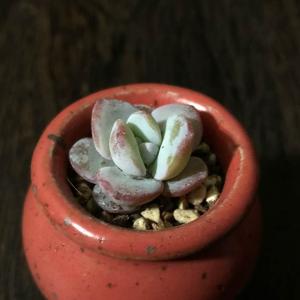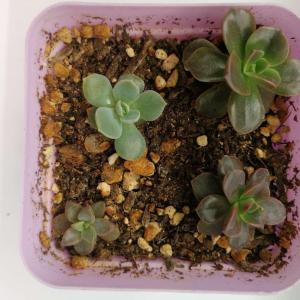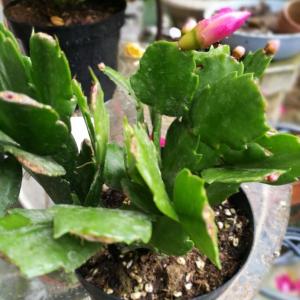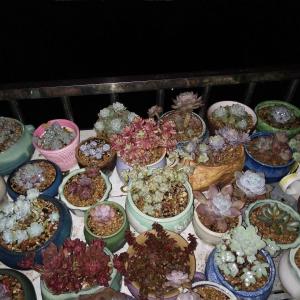文章
Miss Chen
2018年01月07日

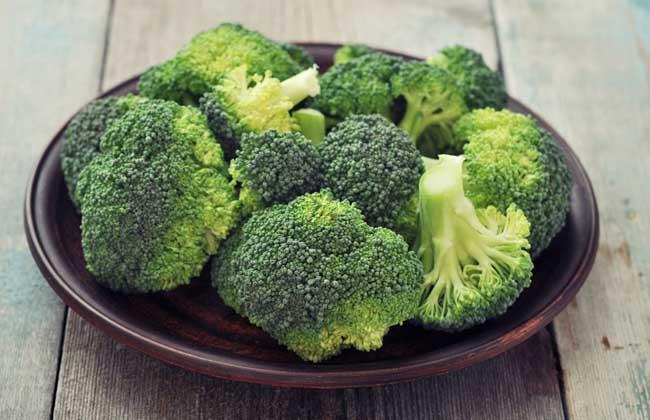
西兰花,又名绿菜花,为1-2年生草本植物,目前我国南北方均有栽培,已成为日常主要蔬菜之一。西兰花营养丰富,含蛋白质、糖、脂肪、维生素和胡萝卜素,营养成份位居同类蔬菜之首,被誉为“蔬菜皇冠”。
十字花科芸苔属甘蓝种中以绿色花球为产品的一个变种。原产欧洲地中海沿岸的意大利一带,光绪年间传入中国。

西兰花的药用价值
【性味】味甘,性平,无毒。
【归经】脾、肾、胃经。
【功效】补肾填精、健脑壮骨、补脾和胃,适宜癌症、久病体虚、肢体痿软、耳鸣健忘、脾胃虚弱、小儿发育迟缓等食用。
西兰花的营养价值
1、西兰花中的维生素K含量极高,维生素K能维护血管的韧性,使血管不易破裂。
2、西兰花的维生素C含量极高,不但有利于人的生长发育,更重要的是能提高人体免疫功能。
3、西兰花含有一种叫萝卜子素的营养成分,有提高致癌物解毒酶活性的作用。
4、西兰花中含有大量的硒,具有抗癌、抗老化、增强免疫力、促进儿童生长发育的功能。
5、西兰花含有丰富的抗坏血酸,能增强肝脏的解毒能力,提高机体免疫力。
西兰花的功效与作用
1、增强免疫:西兰花的维生素C含量极高,有利于人的生长发育,更重要的是能提高人体免疫功能,促进肝脏解毒,增强人的体质,增加抗病能力。
2、清热解渴:西兰花具有清热解渴的功效,在暑热之际、口干渴、小便呈金黄色、大便硬实或不畅通时用花椰菜30克煎汤频频饮服,有清热解渴、利尿通便的功效。
3、减缓衰老:西兰花含有丰富的维生素A、维生素C和胡萝卜素,能增强皮肤的抗损伤能力、有助于保持皮肤弹性,有很强的促进皮肤年轻化、保持青春不老的作用。
4、降压降血:西兰花含有一定量的类黄酮物质,对高血压、心脏病有调节和预防的作用。同时,西兰花是高纤维蔬菜,能有效降低肠胃对葡萄糖的吸收,能降低血糖。
5、减肥瘦身:西兰花的含水量高达90%以上而热量较低,每杯(240毫升)仅23~32千卡,因此对于希望减肥的人来说既可以填饱肚子,而又不会使人发胖。
6、帮助消化:西兰花中富含的胡萝卜素可促进身体胃肠的健康和消化,还富含丰富的膳食纤维、碳水化合物等营养元素,这些成分对帮助消化非常有效。
7、保护血管:西兰花中含有一种叫莱菔硫烷的化学物,能“启动”血管内的一种保护性蛋白质,形成自身的防卫系统,从而避免血管阻塞。
西兰花的食用禁忌
1、西兰花不能过度烹饪,比如炒得泛黄会让蔬菜带有强烈硫磺味且损失营养,最好通过蒸或微波炉来加热。
2、西兰花切好之后不能久放,切碎之后在室温空气中放置6小时,其抗癌成分的损失率可达75%之多。
3、西兰花与牛肝相克,牛肝中含有丰富的铜、铁离子,极易使维生素C氧化而失去原来的功能,所以两者不能搭配食用。
4、西兰花与黄瓜相克,因西兰花中含有丰富的维生素C,而黄瓜中含有维生素C分解酶,故不宜同食。
5、西兰花与洋地黄相克,如果在服用洋地黄时食用西兰花过多会造成药物药效降低。
西兰花的食用方法
1、清炒西兰花
【材料】西兰花,胡萝卜,植物油,调味品各适量。
【做法】①西兰花根稍微切掉点,随后掰成小朵,洗净。胡萝卜洗净切片备用。②锅中烧水,水开之后加点盐,并倒入西兰花过一下水,大概1分钟就可以了。③水再次开的时候倒入胡萝卜,过水一分钟捞起。④锅中底油,油热后倒入西兰花和胡萝卜,大火翻炒2分钟,然后加入调味料调味即可。
2、蒜蓉西兰花
【材料】西兰花,鲍鱼汁,五香粉,水淀粉,调味品各适量。
【做法】①西兰花切块焯水,蒜切末备用。②锅内放油,蒜末爆香,再放入盐、五香粉、糖、酱油炒香。③锅里放入开水和鲍鱼汁,放入西兰花翻炒,然后放入调味料调味。④调味后放入水淀粉,勾芡即可出锅。
3、凉拌西兰花
【材料】西兰花,木耳,葱花,调味品各适量。
【材料】①木耳提前泡发,西兰花切成小朵并用清水浸泡,胡萝卜洗净并用模具压出花形。②锅内入水,放西兰花和胡萝卜焯烫,再放入木耳也烫一下。③锅内入油,葱花爆香成葱油。④将葱油倒入西兰花中,加少许盐、鸡精调味即可。
0
0
文章
Miss Chen
2018年01月06日

Description: This herbaceous perennial wildflower is 1½–3' tall with each stem branching occasionally in the upper half. Because of vegetative offsets, multiple stems usually develop. The pale to medium green stems are strongly winged from the decurrent leaves; they are usually canescent, but some populations of plants can have either glabrous or hairy stems. The alternate leaves are up to 3" long and 1" across; they are pale to medium green, lanceolate to narrowly ovate, smooth along their margins, and canescent to glabrous. The base of each leaf clasps the stem, forming decurrent extensions of the leaf along the stem below.

The upper stems terminate in individual flowerheads about 1" across. Each flowerhead has a globoid center about ½" across that consists of many disk florets that are purple to brown. Surrounding the center of the flowerhead, there are 8-14 ray florets. The petaloid rays of these latter florets are bright yellow, V-shaped (narrow at the base, broad at the tip), and slightly drooping; the tip of each ray is defined by 3 rounded lobes. At the bottom of each flowerhead, there is a single series of floral bracts that are pale green and lanceolate in shape; they become recurved when the flowerheads are in bloom. The blooming period occurs from mid-summer to early fall and lasts about 2 months. The rays fall to the ground, while the disk florets in the globoid center develop into small achenes. Each achene is about 1.0 in length or a little longer and bullet-shaped; there is a crown of awned scales at its apex. The root system is fibrous, forming vegetative offsets.
Winged Stem & Leaves
Cultivation: The preference is full or partial sun, wet to moist conditions, and a slightly acid soil. This wildflower will wilt if it is allowed to dry out. Temporary flooding is tolerated.
Range & Habitat: Purple-Headed Sneezeweed is common in southern Illinois and uncommon in central Illinois, where it is native; in the northern section of the state, where this wildflower is rare, local populations probably derive from escaped cultivated plants (see Distribution Map). Habitats include thinly wooded swamps, soggy riverbottom meadows, wet prairies, moist swales in upland prairies, moist depressions in rocky glades, borders of sinkhole ponds, ditches, pastures, and abandoned fields. This wildflower is found in both high quality and disturbed habitats.
Faunal Associations: The flowerheads offer nectar and pollen as floral rewards to a wide range of insect visitors, including long-tongued bees, short-tongued bees, wasps, flies, butterflies, and skippers. Various insects feed on the leaves, pith of the stems, and other parts of Helenium spp. (Sneezeweeds). These species include the caterpillars of the butterfly Nathalis iole (Dainty Sulfur), the caterpillars of Papaipema impecuniosa (Aster Borer Moth) and Papaipema rigida (Rigid Sunflower Borer Moth), and Smicronyx discoideus (Sneezeweed Weevil). Most of these insects also feed on other herbaceous species in the Aster family. The Greater Prairie Chicken eats the seeds and dried flowerheads of Helenium spp. to a limited extent. Because the foliage is bitter-tasting and toxic, it is avoided by cattle and other mammalian herbivores.
Photographic Location: The wildflower garden of the webmaster in Urbana, Illinois.
Comments: If you can find a sufficiently damp location for it, Purple-Headed Sneezeweed is worth cultivating because of its attractive foliage and flowerheads. Generally, Sneezeweeds (Helenium spp.) can be distinguished from other species in the Aster family by the globoid centers of their flowerheads, their V-shaped and 3-lobed petaloid rays, and their strongly winged stems from the decurrent leaves. Purple-Headed Sneezeweed is easily distinguished from Helenium autumnale (Common Sneezeweed) by the purple to brown globoid centers of its flowerheads; the globoid centers of the latter species are yellow. Another species in Illinois, Helenium amarum (Bitterweed), has very narrow leaves and it prefers drier habitats. Another scientific name of Purple-Headed Sneezeweed is Helenium nudiflorum.

The upper stems terminate in individual flowerheads about 1" across. Each flowerhead has a globoid center about ½" across that consists of many disk florets that are purple to brown. Surrounding the center of the flowerhead, there are 8-14 ray florets. The petaloid rays of these latter florets are bright yellow, V-shaped (narrow at the base, broad at the tip), and slightly drooping; the tip of each ray is defined by 3 rounded lobes. At the bottom of each flowerhead, there is a single series of floral bracts that are pale green and lanceolate in shape; they become recurved when the flowerheads are in bloom. The blooming period occurs from mid-summer to early fall and lasts about 2 months. The rays fall to the ground, while the disk florets in the globoid center develop into small achenes. Each achene is about 1.0 in length or a little longer and bullet-shaped; there is a crown of awned scales at its apex. The root system is fibrous, forming vegetative offsets.
Winged Stem & Leaves
Cultivation: The preference is full or partial sun, wet to moist conditions, and a slightly acid soil. This wildflower will wilt if it is allowed to dry out. Temporary flooding is tolerated.
Range & Habitat: Purple-Headed Sneezeweed is common in southern Illinois and uncommon in central Illinois, where it is native; in the northern section of the state, where this wildflower is rare, local populations probably derive from escaped cultivated plants (see Distribution Map). Habitats include thinly wooded swamps, soggy riverbottom meadows, wet prairies, moist swales in upland prairies, moist depressions in rocky glades, borders of sinkhole ponds, ditches, pastures, and abandoned fields. This wildflower is found in both high quality and disturbed habitats.
Faunal Associations: The flowerheads offer nectar and pollen as floral rewards to a wide range of insect visitors, including long-tongued bees, short-tongued bees, wasps, flies, butterflies, and skippers. Various insects feed on the leaves, pith of the stems, and other parts of Helenium spp. (Sneezeweeds). These species include the caterpillars of the butterfly Nathalis iole (Dainty Sulfur), the caterpillars of Papaipema impecuniosa (Aster Borer Moth) and Papaipema rigida (Rigid Sunflower Borer Moth), and Smicronyx discoideus (Sneezeweed Weevil). Most of these insects also feed on other herbaceous species in the Aster family. The Greater Prairie Chicken eats the seeds and dried flowerheads of Helenium spp. to a limited extent. Because the foliage is bitter-tasting and toxic, it is avoided by cattle and other mammalian herbivores.
Photographic Location: The wildflower garden of the webmaster in Urbana, Illinois.
Comments: If you can find a sufficiently damp location for it, Purple-Headed Sneezeweed is worth cultivating because of its attractive foliage and flowerheads. Generally, Sneezeweeds (Helenium spp.) can be distinguished from other species in the Aster family by the globoid centers of their flowerheads, their V-shaped and 3-lobed petaloid rays, and their strongly winged stems from the decurrent leaves. Purple-Headed Sneezeweed is easily distinguished from Helenium autumnale (Common Sneezeweed) by the purple to brown globoid centers of its flowerheads; the globoid centers of the latter species are yellow. Another species in Illinois, Helenium amarum (Bitterweed), has very narrow leaves and it prefers drier habitats. Another scientific name of Purple-Headed Sneezeweed is Helenium nudiflorum.
0
0
文章
Miss Chen
2018年01月06日

Description: This perennial wildflower forms a low leafy rosette about 6-10" across. Individual basal leaves are 3-5" long and 1-1¾" across; each leaf is odd-pinnate with 3-6 pairs of lateral leaflets and a terminal leaflet. There are also secondary leaflets that are inserted between some pairs of lateral leaflets; these secondary leaflets are quite small and poorly developed. These leaflets are oriented away from the center of the rosette, forming an oblique angle with the rachis (central stalk of the compound leaf).
Individual leaflets are oblanceolate in shape, shallowly cleft, coarsely dentate, and slightly ciliate along their margins; they are somewhat variable and irregular. During the growing season, the upper leaf surface is medium green and sparsely covered with short appressed hairs, while the lower leaf surface is light green and hairy primarily along the rachis and major veins. Flowering stalks develop from the center of the rosette, becoming 5-10" tall at maturity. Each stalk terminates in an umbel of 3 nodding flowers. The flowering stalks (peduncles) are reddish green to reddish purple, terete, and densely hairy. There is a pair of leafy bracts at the base of each umbel that are deeply cleft with linear to linear-oblong segments. These bracts are reddish green to reddish purple and hairy. Sometimes pairs of leafy bractlets develop along the hairy pedicels of the flowers; these bractlets are also deeply cleft with linear segments. IndividualDistribution Map flowers are ½-1" long and similarly across. Each flower consists of 5 pale red to purplish red sepals, 5 white to pale red petals, a central cluster of pistils, and numerous stamens that are arranged in a ring. The sepals extend along the entire length of the flower and they are joined together at the base; each sepal is deltate in shape and hairy. Each flower also has 5 linear floral bracts (one floral bract between each adjacent pair of sepals). These floral bracts are the same color as the sepals and hairy; they extend outward from the sepals. The petals are largely hidden by the long sepals as the flower barely opens. The blooming period can occur from early to late spring and lasts about 1-2 months. Afterwards, each flower becomes erect and develops a dense cluster of achenes with long feathery tails. These achenes are distributed by the wind. The root system is fibrous and rhizomatous. This wildflower can form small clonal colonies of plants from the rhizomes. A rosette of low basal leaves persists through the winter; these winter leaves are often reddish purple.
Cultivation: The preference is full sun, mesic to dry conditions, and a barren soil that is rocky, gravelly, or sandy. Young plants should be kept well-watered during hot summer weather as Prairie Smoke is adapted to a somewhat cool northern climate. Competition from taller and more aggressive plants is not tolerated.
Range & Habitat: The native Prairie Smoke is restricted to northern Illinois, where it is uncommon. Elsewhere in the state, it is absent. In Illinois, habitats consist of dry gravelly prairies and hill prairies. In other states (e.g., Michigan), this plant has been found in sand prairies and alvars (a habitat that is dominated by limestone slabs). This conservative species is found in high quality prairies where the vegetation is neither too dense nor tall.
Faunal Associations: The flowers are cross-pollinated by bumblebees, which seek primarily nectar from the flowers (personal observation, 2011; Choberka et al., 2000). These insects are strong enough to force their way into the flowers. The adults of a leaf beetle, Graphops marcassita, have been observed to feed on Prairie Smoke (Clark et al., 2004). The larvae of this beetle may also feed on the roots.
Photographic Location: The wildflower garden of the webmaster in Urbana, Illinois.

Comments: Prairie Smoke is an attractive little plant that should be cultivated more often. The reddish flowers remain attractive for 2-3 months during both the blooming period and afterwards as the achenes develop. It is an easy plant to identify because no other Geum sp. (Avens) within Illinois develops achenes with long feathery tails. Only one other species in this genus, Geum rivale (Water Avens), also produces large reddish flowers. However, Water Avens prefers much wetter habitats than Prairie Smoke. Within the state, other species in this genus produce more conventional flowers with 5 spreading petals that are white or yellow.
Individual leaflets are oblanceolate in shape, shallowly cleft, coarsely dentate, and slightly ciliate along their margins; they are somewhat variable and irregular. During the growing season, the upper leaf surface is medium green and sparsely covered with short appressed hairs, while the lower leaf surface is light green and hairy primarily along the rachis and major veins. Flowering stalks develop from the center of the rosette, becoming 5-10" tall at maturity. Each stalk terminates in an umbel of 3 nodding flowers. The flowering stalks (peduncles) are reddish green to reddish purple, terete, and densely hairy. There is a pair of leafy bracts at the base of each umbel that are deeply cleft with linear to linear-oblong segments. These bracts are reddish green to reddish purple and hairy. Sometimes pairs of leafy bractlets develop along the hairy pedicels of the flowers; these bractlets are also deeply cleft with linear segments. IndividualDistribution Map flowers are ½-1" long and similarly across. Each flower consists of 5 pale red to purplish red sepals, 5 white to pale red petals, a central cluster of pistils, and numerous stamens that are arranged in a ring. The sepals extend along the entire length of the flower and they are joined together at the base; each sepal is deltate in shape and hairy. Each flower also has 5 linear floral bracts (one floral bract between each adjacent pair of sepals). These floral bracts are the same color as the sepals and hairy; they extend outward from the sepals. The petals are largely hidden by the long sepals as the flower barely opens. The blooming period can occur from early to late spring and lasts about 1-2 months. Afterwards, each flower becomes erect and develops a dense cluster of achenes with long feathery tails. These achenes are distributed by the wind. The root system is fibrous and rhizomatous. This wildflower can form small clonal colonies of plants from the rhizomes. A rosette of low basal leaves persists through the winter; these winter leaves are often reddish purple.
Cultivation: The preference is full sun, mesic to dry conditions, and a barren soil that is rocky, gravelly, or sandy. Young plants should be kept well-watered during hot summer weather as Prairie Smoke is adapted to a somewhat cool northern climate. Competition from taller and more aggressive plants is not tolerated.
Range & Habitat: The native Prairie Smoke is restricted to northern Illinois, where it is uncommon. Elsewhere in the state, it is absent. In Illinois, habitats consist of dry gravelly prairies and hill prairies. In other states (e.g., Michigan), this plant has been found in sand prairies and alvars (a habitat that is dominated by limestone slabs). This conservative species is found in high quality prairies where the vegetation is neither too dense nor tall.
Faunal Associations: The flowers are cross-pollinated by bumblebees, which seek primarily nectar from the flowers (personal observation, 2011; Choberka et al., 2000). These insects are strong enough to force their way into the flowers. The adults of a leaf beetle, Graphops marcassita, have been observed to feed on Prairie Smoke (Clark et al., 2004). The larvae of this beetle may also feed on the roots.
Photographic Location: The wildflower garden of the webmaster in Urbana, Illinois.

Comments: Prairie Smoke is an attractive little plant that should be cultivated more often. The reddish flowers remain attractive for 2-3 months during both the blooming period and afterwards as the achenes develop. It is an easy plant to identify because no other Geum sp. (Avens) within Illinois develops achenes with long feathery tails. Only one other species in this genus, Geum rivale (Water Avens), also produces large reddish flowers. However, Water Avens prefers much wetter habitats than Prairie Smoke. Within the state, other species in this genus produce more conventional flowers with 5 spreading petals that are white or yellow.
0
0
文章
Miss Chen
2018年01月05日

Description: This perennial plant is unbranched and about ¾–1½' tall. The central stem is slightly reddish and has lines of minute white hairs that are difficult to see. The leaves are up to 3" long and 1¼" across. They are oppositely arranged along the central stem, except at the apex of the plant, where they occur in a whorl of 3-7 smaller leaves. They are lanceolate, sessile, and have smooth margins. On each leaf, there may be minute pubescence along the central vein at the base, otherwise the texture tends to be shiny. Two smaller side veins run parallel to the central vein. One or more clusters of 1-8 flowers occur at or near the apex of the plant. The inflorescence is sessile at the topmost whorl of leaves, otherwise the flowers occur on short stalks from the axils of the upper opposite leaves. The violet-blue flowers are about 2" long and 1" across when fully open. The corolla is tubular and vase-shaped, but divides into 5 small triangular lobes that reflex outward. Within the corolla, there is a prominent stigma with a divided white tip, which is surrounded by 5 stamens with white anthers. The outer sides of the corolla contain some patches of greenish violet, while it becomes whitish green near the base on the inside.
The blooming period occurs during the fall, and lasts about a month. There is no noticeable floral fragrance. The seed capsules split into 2 sections, releasing numerous small seeds that can be dispersed by wind or water. The root system consists of a long stout taproot with a few lateral roots.
Cultivation: The preference is full sun and average to dry soil. The soil texture can consist of rich loam, clay-loam, or contain some gravel. Prairie Gentian is often difficult to start from seed, but fairly easy to establish from transplants. Foliar disease rarely bothers the leaves. This plant is quite drought resistant.

Range & Habitat: The native Prairie Gentian is uncommon in NE Illinois, while it is rare or absent elsewhere within the state (see Distribution Map). This is an indicator plant of original prairie and other high quality habitats. Such habitats include mesic to dry black soil prairies, gravelly hill prairies, barrens with stunted trees or shrubs, limestone glades, and prairie remnants along railroads. Occasionally, Prairie Gentian forms small loose colonies. It adapts well to a regimen of occasional spring wildfires, as this removes some of the grassy debris that can smother this plant.
Faunal Associations: Bumblebees are attracted to the nectar of the flowers and cross-pollinate them. Some beetles may knaw on the flowers or eat the seeds, such as Epicauta pensylvanica (Black Blister Beetle). The seeds are too small to be of much interest to birds. Most mammalian herbivores usually don't bother this plant because the leaves are bitter, although White-Tailed Deer may chomp off the upper half of its leafy stems. Overall, the value of this plant to wildlife is low.

Photographic Location: The photographs were taken at Loda Cemetery Prairie in Iroquois County, Illinois.
Comments: This is one of the most beautiful plants on the prairie during the fall, with exceptionally vivid blue-violet flowers. Prairie Gentian can be distinguished from other gentians that occur within the state by its more open corolla and its small, reflexed lobes. It is also has fine white hairs on the stems and at the base of the leaves, but they are often hard to see. Another scientific name for this plant is Gentiana puberula; another common name is 'Downy Gentian.'
The blooming period occurs during the fall, and lasts about a month. There is no noticeable floral fragrance. The seed capsules split into 2 sections, releasing numerous small seeds that can be dispersed by wind or water. The root system consists of a long stout taproot with a few lateral roots.
Cultivation: The preference is full sun and average to dry soil. The soil texture can consist of rich loam, clay-loam, or contain some gravel. Prairie Gentian is often difficult to start from seed, but fairly easy to establish from transplants. Foliar disease rarely bothers the leaves. This plant is quite drought resistant.

Range & Habitat: The native Prairie Gentian is uncommon in NE Illinois, while it is rare or absent elsewhere within the state (see Distribution Map). This is an indicator plant of original prairie and other high quality habitats. Such habitats include mesic to dry black soil prairies, gravelly hill prairies, barrens with stunted trees or shrubs, limestone glades, and prairie remnants along railroads. Occasionally, Prairie Gentian forms small loose colonies. It adapts well to a regimen of occasional spring wildfires, as this removes some of the grassy debris that can smother this plant.
Faunal Associations: Bumblebees are attracted to the nectar of the flowers and cross-pollinate them. Some beetles may knaw on the flowers or eat the seeds, such as Epicauta pensylvanica (Black Blister Beetle). The seeds are too small to be of much interest to birds. Most mammalian herbivores usually don't bother this plant because the leaves are bitter, although White-Tailed Deer may chomp off the upper half of its leafy stems. Overall, the value of this plant to wildlife is low.

Photographic Location: The photographs were taken at Loda Cemetery Prairie in Iroquois County, Illinois.
Comments: This is one of the most beautiful plants on the prairie during the fall, with exceptionally vivid blue-violet flowers. Prairie Gentian can be distinguished from other gentians that occur within the state by its more open corolla and its small, reflexed lobes. It is also has fine white hairs on the stems and at the base of the leaves, but they are often hard to see. Another scientific name for this plant is Gentiana puberula; another common name is 'Downy Gentian.'
0
0
文章
Miss Chen
2018年01月05日

Description: This herbaceous perennial wildflower is 1-2' tall. The central stem is light green to reddish green, terete, glabrous, and unbranched. Pairs of opposite leaves occur at intervals along this stem. Individual leaves are 2-4" long and 1-2" across; they are more or less ovate, smooth along their margins, parallel-veined, and sessile. Both the upper and lower surfaces of the leaves are yellowish green, light green, or medium green; they are also glabrous.
The central stem terminates in a sessile cluster of several flowers that is located directly above the uppermost pair of leaves. There is often another sessile cluster of flowers that is located directly above the second uppermost pair of leaves. This second cluster of flowers, when it is present, is usually smaller than the uppermost cluster of flowers. Individual flowers are 1¼-1½" long, consisting of a stout tubular corolla that is pale blue-violet to blue-violet, a short greenish calyx with 5 lobes, 5 inserted stamens, and an inserted pistil. The corolla has 5 inconspicuous lobes that are joined together by membranous tissue; the tips of the corolla lobes extend a little above the upper surface of the membranous tissue. The apex of the corolla is usually closed or only slightly open, causing the reproductive organs to remain hidden from view. The calyx lobes are lanceolate-ovate and about ¼" in length. Underneath the calyx of each flower, there is a pair of leafy bracts of highly variable size (¼-2" in length). These bracts resemble the leaves, except they are smaller in size. The blooming period occurs from late summer to early fall, lasting about 1 month. Afterwards, the flowers are replaced by one-celled seed capsules that are lanceoloid-ellipsoid in shape. Each seed capsule contains numerous small seeds. Individual seeds are oblongoid, somewhat flattened, and winged along their margins. The root system consists of a taproot.
Cultivation: The preference is full or partial sun, moist conditions, and soil containing loam or sand. This wildflower is rarely bothered by insects or disease organisms.

Range & Habitat: So far, the native Hybrid Bottle Gentian has been found only in Champaign County, Illinois (see Distribution Map), and it is quite rare within the state. This naturally occurring hybrid has also been reported from Wisconsin, Missouri, and a few other states, where it is also rare. Habitats include riverbottom prairies, restored prairies, woodland borders, low areas along water, and edges of marshes. Hybrid Bottle Gentian can occur where the ranges of its two parents, Gentiana andrewsii (Bottle Gentian) and Gentiana alba (White Gentian), overlap. It can also occur spontaneously in restored prairies wherever Bottle Gentian and White Gentian have been introduced together.
Faunal Associations: Bumblebees occasionally force their way into the flowers to obtain the nectar. Even though the foliage of this gentian is bitter-tasting, White-Tailed Deer sometimes chomp off the upper half of individual plants. Overall, the value of this and other gentians (Gentiana spp.) to wildlife is low.
Photographic Location: A restored prairie at Meadowbrook Park in Urbana, Illinois.

Comments: Hybrid Bottle Gentian can be variable in appearance, sometimes resembling Gentiana andrewsii (Bottle Gentian) to a greater extent than Gentiana alba (White Gentian), and sometimes resembling the latter to a greater extent than the former. These genetic variations may be the result of the relative abundance of one parent species as compared to the other in the area where this hybrid gentian occurs, thereby influencing overall gene flow. When Hybrid Bottle Gentian more closely resembles Bottle Gentian than White Gentian, it can be difficult to distinguish from another species, Gentiana saponaria (Soapwort Gentian), which also occurs in Illinois. Generally, Hybrid Bottle Gentian has calyx lobes that are more wide than those of Soapwort Gentian, even though their flowers and leaves may closely resemble each other. Other common names of Gentiana × pallidocyanea include Hybrid Closed Gentian and Pale Blue Gentian.
The central stem terminates in a sessile cluster of several flowers that is located directly above the uppermost pair of leaves. There is often another sessile cluster of flowers that is located directly above the second uppermost pair of leaves. This second cluster of flowers, when it is present, is usually smaller than the uppermost cluster of flowers. Individual flowers are 1¼-1½" long, consisting of a stout tubular corolla that is pale blue-violet to blue-violet, a short greenish calyx with 5 lobes, 5 inserted stamens, and an inserted pistil. The corolla has 5 inconspicuous lobes that are joined together by membranous tissue; the tips of the corolla lobes extend a little above the upper surface of the membranous tissue. The apex of the corolla is usually closed or only slightly open, causing the reproductive organs to remain hidden from view. The calyx lobes are lanceolate-ovate and about ¼" in length. Underneath the calyx of each flower, there is a pair of leafy bracts of highly variable size (¼-2" in length). These bracts resemble the leaves, except they are smaller in size. The blooming period occurs from late summer to early fall, lasting about 1 month. Afterwards, the flowers are replaced by one-celled seed capsules that are lanceoloid-ellipsoid in shape. Each seed capsule contains numerous small seeds. Individual seeds are oblongoid, somewhat flattened, and winged along their margins. The root system consists of a taproot.
Cultivation: The preference is full or partial sun, moist conditions, and soil containing loam or sand. This wildflower is rarely bothered by insects or disease organisms.

Range & Habitat: So far, the native Hybrid Bottle Gentian has been found only in Champaign County, Illinois (see Distribution Map), and it is quite rare within the state. This naturally occurring hybrid has also been reported from Wisconsin, Missouri, and a few other states, where it is also rare. Habitats include riverbottom prairies, restored prairies, woodland borders, low areas along water, and edges of marshes. Hybrid Bottle Gentian can occur where the ranges of its two parents, Gentiana andrewsii (Bottle Gentian) and Gentiana alba (White Gentian), overlap. It can also occur spontaneously in restored prairies wherever Bottle Gentian and White Gentian have been introduced together.
Faunal Associations: Bumblebees occasionally force their way into the flowers to obtain the nectar. Even though the foliage of this gentian is bitter-tasting, White-Tailed Deer sometimes chomp off the upper half of individual plants. Overall, the value of this and other gentians (Gentiana spp.) to wildlife is low.
Photographic Location: A restored prairie at Meadowbrook Park in Urbana, Illinois.

Comments: Hybrid Bottle Gentian can be variable in appearance, sometimes resembling Gentiana andrewsii (Bottle Gentian) to a greater extent than Gentiana alba (White Gentian), and sometimes resembling the latter to a greater extent than the former. These genetic variations may be the result of the relative abundance of one parent species as compared to the other in the area where this hybrid gentian occurs, thereby influencing overall gene flow. When Hybrid Bottle Gentian more closely resembles Bottle Gentian than White Gentian, it can be difficult to distinguish from another species, Gentiana saponaria (Soapwort Gentian), which also occurs in Illinois. Generally, Hybrid Bottle Gentian has calyx lobes that are more wide than those of Soapwort Gentian, even though their flowers and leaves may closely resemble each other. Other common names of Gentiana × pallidocyanea include Hybrid Closed Gentian and Pale Blue Gentian.
0
0
文章
Miss Chen
2018年01月05日

Description: This perennial plant is 1-2' tall. Multiple stems can emerge from the taproot, otherwise this plant is unbranched. The central stem is round, hairless, and either light green or purple. The opposite leaves are up to 4½" long and 2" across, and sessile against the stem. They are broadly lanceolate or ovate, with smooth margins and parallel venation. The upper surface of each leaf is dark green and often shiny, while both the upper and lower surfaces are devoid of hairs. The uppermost tier of leaves is often whorled. The apex of the stem terminates in a cluster of flowers immediately above the whorled leaves, while smaller clusters of flowers may develop from the axils of the upper pairs of leaves. These flowers are bottle-shaped, looking like oversized flowerbuds even when mature, and they are 1–1½" long. The corollas are violet, and will assume different shades of this color depending on the maturity of each flower. There are longitudinal ridges along the outer edge of the corolla, providing it with a wrinkly appearance. The corolla remains closed at the top even when the flower is ready to receive pollinating insects. Inside, the reproductive structures of the flower are fused together to form a central column. The corolla usually has 5 lobes, but these are barely noticeable because of an interconnecting fringe that is even taller than the lobes. The green calyx is much smaller than the corolla, and divided into 5 lanceolate segments. These segments may curl outward away from the flower rather than remaining upright.
The blooming period can occur from late summer to early fall, and usually lasts about a month. There is no noticeable floral scent. The small seeds can be transported by water or wind some distance from a mother plant. The root system consists of a stout taproot. Vegetative reproduction does not normally occur.
Cultivation: The preference is full or partial sun, and moist rich soil. It is easier to start with potted plants rather than seed, as germination can be erratic and seedling mortality can be high. Mature plants are rarely bothered by foliar disease or leaf-chewing insects. The worst threat is droughty conditions, but appropriate placement of plants will mitigate this problem.

Range & Habitat: The native Bottle Gentian is occasional in the northern half of Illinois and uncommon in the rest of the state (see Distribution Map). However, populations of the plant are probably declining as a result of the destruction of wetlands. Habitats include moist black soil prairies, openings in floodplain forests, thickets, fens, and swampy areas near bodies of water. This plant often occurs in calcareous soil.
Faunal Associations: Bumblebees are the primary pollinators of the flowers, as they are one of the few insects that can force their way past the closed corolla. This floral characteristic excludes smaller insects that are less efficient at pollination from robbing nectar and pollen from the bumblebees. Because the foliage and roots are bitter-tasting, mammalian herbivores usually don't use this plant as a food source. However, deer may chomp off the tender tops of the plants before they have a chance to flower. This can cause the central stem to form smaller side branches. The seeds are too small to be of much interest to birds. The ecological value of Bottle Gentian is low, notwithstanding the appeal of the flowers to humans.
Photographic Location: The photographs were taken of plants growing in a mesic prairie at Meadowbrook Park in Urbana, Illinois.

Comments: Bottle Gentian is a wierd-looking plant with a striking appearance. The adorable flowers are often deep violet, although other shades also occur, even in the same cluster of flowers. The only other gentian that this species can be confused with (among those that occur in Illinois) is Gentiana saponaria (Soapwort Gentian). Usually, Soapwort Gentian is pale violet or greyish blue, while the interconnecting fringe of the corolla is shorter than, or equal to, the length of the lobes. This interconnecting fringe is always taller than the lobes in the corolla of the Bottle Gentian. Sometimes the segments of the calyx curve outward in the Bottle Gentian, while they remain reasonably upright in the Soapwort Gentian, but this is not always a reliable distinction.
The blooming period can occur from late summer to early fall, and usually lasts about a month. There is no noticeable floral scent. The small seeds can be transported by water or wind some distance from a mother plant. The root system consists of a stout taproot. Vegetative reproduction does not normally occur.
Cultivation: The preference is full or partial sun, and moist rich soil. It is easier to start with potted plants rather than seed, as germination can be erratic and seedling mortality can be high. Mature plants are rarely bothered by foliar disease or leaf-chewing insects. The worst threat is droughty conditions, but appropriate placement of plants will mitigate this problem.

Range & Habitat: The native Bottle Gentian is occasional in the northern half of Illinois and uncommon in the rest of the state (see Distribution Map). However, populations of the plant are probably declining as a result of the destruction of wetlands. Habitats include moist black soil prairies, openings in floodplain forests, thickets, fens, and swampy areas near bodies of water. This plant often occurs in calcareous soil.
Faunal Associations: Bumblebees are the primary pollinators of the flowers, as they are one of the few insects that can force their way past the closed corolla. This floral characteristic excludes smaller insects that are less efficient at pollination from robbing nectar and pollen from the bumblebees. Because the foliage and roots are bitter-tasting, mammalian herbivores usually don't use this plant as a food source. However, deer may chomp off the tender tops of the plants before they have a chance to flower. This can cause the central stem to form smaller side branches. The seeds are too small to be of much interest to birds. The ecological value of Bottle Gentian is low, notwithstanding the appeal of the flowers to humans.
Photographic Location: The photographs were taken of plants growing in a mesic prairie at Meadowbrook Park in Urbana, Illinois.

Comments: Bottle Gentian is a wierd-looking plant with a striking appearance. The adorable flowers are often deep violet, although other shades also occur, even in the same cluster of flowers. The only other gentian that this species can be confused with (among those that occur in Illinois) is Gentiana saponaria (Soapwort Gentian). Usually, Soapwort Gentian is pale violet or greyish blue, while the interconnecting fringe of the corolla is shorter than, or equal to, the length of the lobes. This interconnecting fringe is always taller than the lobes in the corolla of the Bottle Gentian. Sometimes the segments of the calyx curve outward in the Bottle Gentian, while they remain reasonably upright in the Soapwort Gentian, but this is not always a reliable distinction.
0
0
文章
巴黎铁塔
2018年01月03日
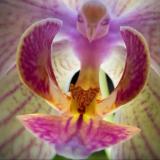

1.肥料不适
在培育它的时候,我们都是选择一些腐叶土、河沙土等等,然后把它们和少量的有机肥料混合在一起,配置成培养基质。这样它在前期会更容易活下来。然后等到每年3到10月的时候,每隔上2星期就要给它施加一次液肥,这样就可以让叶色更浓绿,如果以上这些没有做到的话,那它的营养就没有供应上,叶片发黄也是难免的。所以施肥也是要适当的。

2.湿度不适
在它生长期的时候,一定要经常保持土壤湿润,还不能让空气太干燥了,不然湿度就会降低,这样叶子也会变得无光泽,甚至枯黄。我们可以在空气干燥的时候,经常向它的叶片上喷水,来提高空气的湿度,这样就能让它的叶色浓绿。由此可见湿度也是影响叶片颜色的一个原因。

3.光照不适
它是非常害怕强光的,如果不小心让它受到强光照射,就会让叶子发黄。它一般是比较喜欢半阴环境的,而且耐阴时间很长,就算是待在阴暗地方1到2个月也是没事的。所以在平时养护它的时候,如果真的太给它晒太阳,那只能接受一些明亮的散射光。

4.浇水不适
虽说它湿润的环境,可是也不能让水分太充足了,不然就会让盆土过于湿润,造成根部溃烂,营养了植株的营养传送,进而让叶子发黄。所以浇水一定要适量,才能保持叶色浓绿。
5.病害引起
当温度极高和湿度极高时,它就会容易出现一些病害,这些病害会直接给它的植株造成影响,让其没有办法正常生长,进而也让营养缺失,导致叶子发黄,那我们就需要及时发现及时防治,防止叶子受到伤害。
0
1
文章
权问薇
2018年01月03日

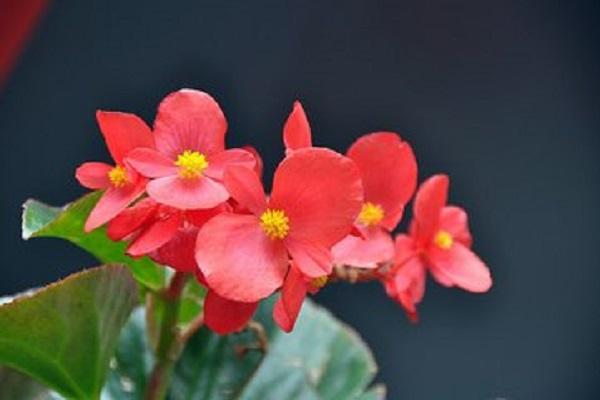
一、关于四季海棠花谢后的措施:
1.换土:四季海棠的基质可以用河沙混以腐叶,充分搅拌后调制,给四季海棠换一个适合的生长环境可以帮助它快速生长。
2.浇水:在四季海棠花谢后,我们应该减少浇水量,保持四季海棠的盆土略干燥。差不多每两天浇水一次,并经常向它的周围喷洒水雾,以提高空气湿度。还要注意的是,我们在浇水时不要自上而下地垂直地浇,而是要沿着四季海棠的花盆四周慢慢地浇。

3.施肥:在四季海棠花谢后,我们应根据四季海棠的叶子生长情况施加肥料。我们不能施过多的肥,否则叶片会白白生长,新花却不能生长
4.摘心:四季海棠在花谢后要及时摘心,去除残败的花,这样以后它新开的花就会更加茂盛。
5.修剪:在四季海棠在花开前,我们应适时修剪枝叶,以防止它们的消耗养分。修剪之后,它开出的花必定会更艳丽健康、光彩夺目。

二、关于四季海棠防止花谢的措施:
1.防冻:在冬季来临之前,我们要将四季海棠放置在室内温暖处。
2.防病:在夏季,四季海棠容易患上花谢病。我们发现病征出现后,就应该及时减少浇水量,持续一段时间即可减轻症状。
3.防虫害:卷叶蛾是引起四季海棠患病常见的害虫,这种幼虫会食害四季海棠的花。对于这种情况,如果不是特别的严重,我们可以选择人工捕捉。

1
1






